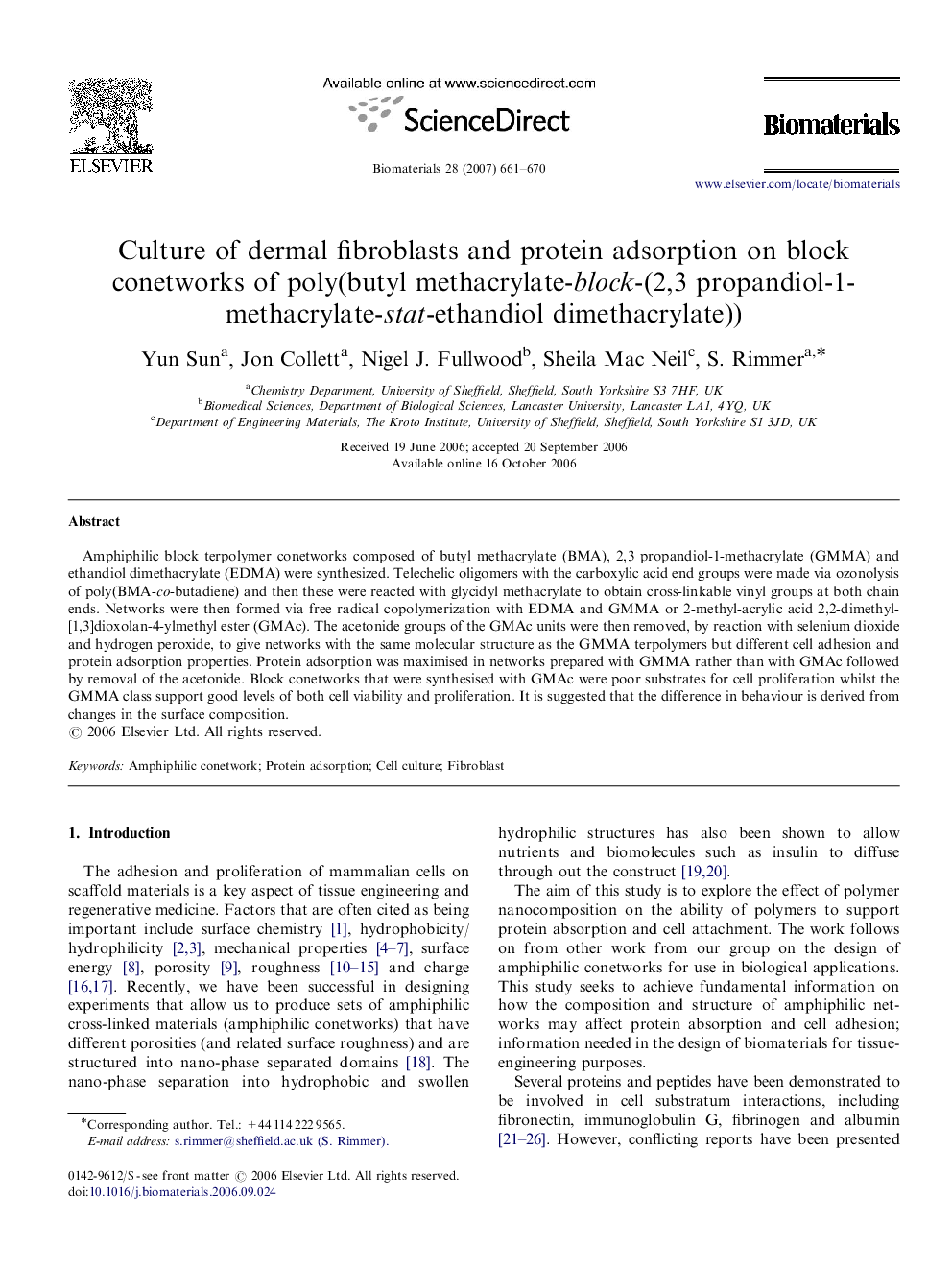| کد مقاله | کد نشریه | سال انتشار | مقاله انگلیسی | نسخه تمام متن |
|---|---|---|---|---|
| 11148 | 721 | 2007 | 10 صفحه PDF | دانلود رایگان |

Amphiphilic block terpolymer conetworks composed of butyl methacrylate (BMA), 2,3 propandiol-1-methacrylate (GMMA) and ethandiol dimethacrylate (EDMA) were synthesized. Telechelic oligomers with the carboxylic acid end groups were made via ozonolysis of poly(BMA-co-butadiene) and then these were reacted with glycidyl methacrylate to obtain cross-linkable vinyl groups at both chain ends. Networks were then formed via free radical copolymerization with EDMA and GMMA or 2-methyl-acrylic acid 2,2-dimethyl-[1,3]dioxolan-4-ylmethyl ester (GMAc). The acetonide groups of the GMAc units were then removed, by reaction with selenium dioxide and hydrogen peroxide, to give networks with the same molecular structure as the GMMA terpolymers but different cell adhesion and protein adsorption properties. Protein adsorption was maximised in networks prepared with GMMA rather than with GMAc followed by removal of the acetonide. Block conetworks that were synthesised with GMAc were poor substrates for cell proliferation whilst the GMMA class support good levels of both cell viability and proliferation. It is suggested that the difference in behaviour is derived from changes in the surface composition.
Journal: Biomaterials - Volume 28, Issue 4, February 2007, Pages 661–670